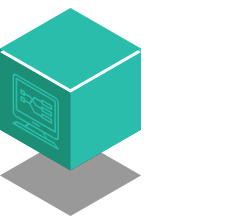


Integrated distributed file storage for NFT's, Metaverse assets and other files

EVM compatibility and multi-runtime support, allowing developers to use familiar tools and languages

Rewarding computational effort fairly, by using collaborative rather than competitive consensus
The blockchain industry has drifted from its founding principles.
What began as a movement to democratize finance has evolved into systems that recreate the very exclusivity they sought to replace.
Some would say it's rich online virtual worlds, gaming, entertainment and some day the full Ready Player One experience.
Catalyst Network returns blockchain to its roots through concrete technical innovations that prove true decentralization isn't just an ideal—it's an achievable reality.


To build a blockchain that returns to the founding principles of this industry. Fairness, decentralisation and inclusion.
Our vision is a world where blockchain is accessible to everyone, regardless of wealth or geography. A world where anyone can contribute to the network and be rewarded for their efforts.
Requires 32 ETH (~$100,000+) to run a validator. The industry that promised to "bank the unbanked" now requires significant wealth just to participate.
Dominated by industrial farms with million-dollar ASIC investments. Individual miners can no longer compete.
Controlled by token whales and venture capital. Median DeFi proposal requires $100K+ in tokens to have meaningful impact.
Complex tooling requiring blockchain-specific expertise. Millions of existing developers are excluded.
Ethereum validators controlled by top 10 staking pools
Bitcoin hash rate controlled by top 4 mining pools
Typical requirement for meaningful DeFi governance participation

Unlike competitive mining or wealth-based staking, our collaborative consensus rewards work over wealth. No computational puzzles, no token requirements—just meaningful contribution to the network.

Break free from single-language constraints. Deploy Ethereum contracts, Solana programs, or native code—all on the same network. Choose the best environment for your application.

Make blockchain accessible to millions of existing developers. Our service bus treats blockchain events like any message queue—no Web3 expertise required.


All producer nodes build candidate ledger updates from the transaction pool. No computational puzzles or token requirements.

Nodes propose their candidate updates to peers. Majority agreement emerges through mathematical comparison.

Nodes vote on the most popular candidate. Requires supermajority (>67%) for consensus, weighted by contribution history.

Final ledger update distributed across network. All nodes update their local state and rewards are distributed.
Merit-based distribution that puts work over wealth
Tokens in circulation at launch
Or insider advantages
Regardless of geography or wealth
Through network contribution
| Launch Type | Initial Distribution | Centralization Risk | Regulatory Risk | Accessibility |
|---|---|---|---|---|
| ICO/Token Sale | Concentrated among buyers | High (wealth-based) | High (securities) | Low (requires capital) |
| Pre-mine | Team/investor allocation | Very High | Medium | Very Low |
| PoW Launch | Miners with hardware | Medium (hardware costs) | Low (no sale) | Medium (hardware barrier) |
| PoS Launch | Stakers with tokens | High (wealth-based) | Medium | Low (token requirement) |
| Catalyst Fair Launch | Merit-based earning | Low (work-based) | Low (no sale) | High (open participation) |

New announcements and a workshop on building a Web3.0 Twitter service.

Blockchain firm which just raised $4 million is heading to Switzerland.

Yet more overseas blockchain firms are coming to Switzerland.